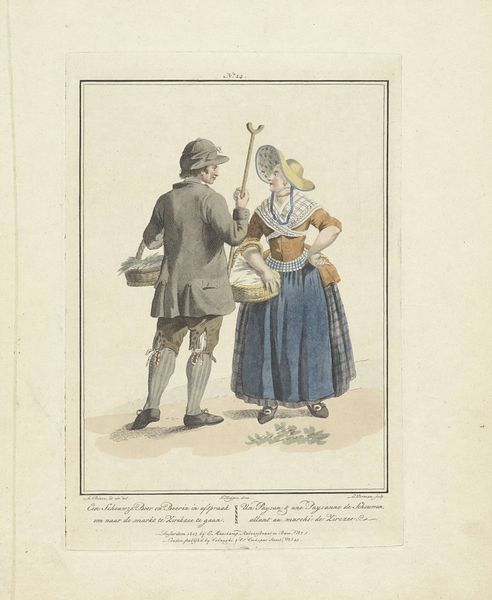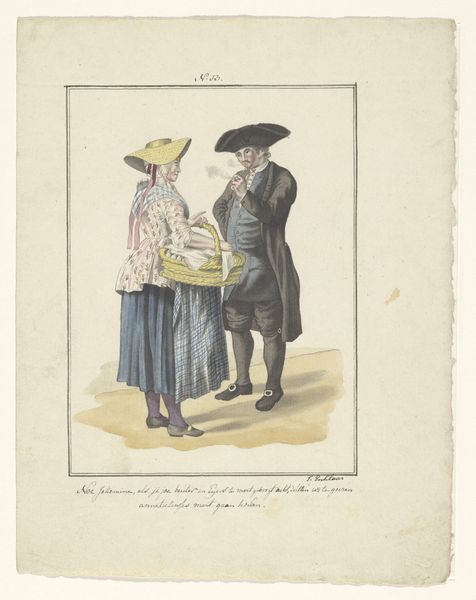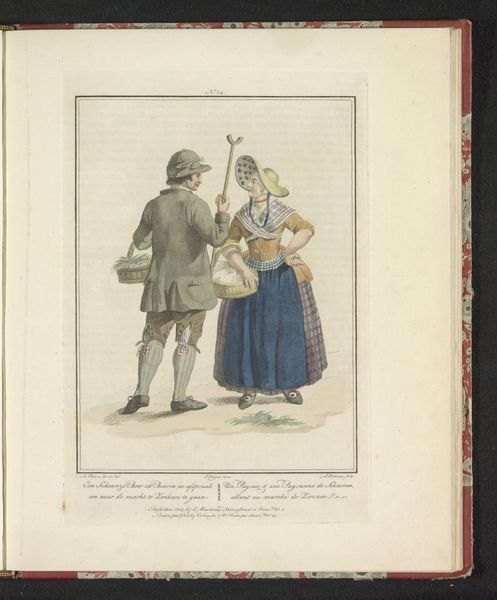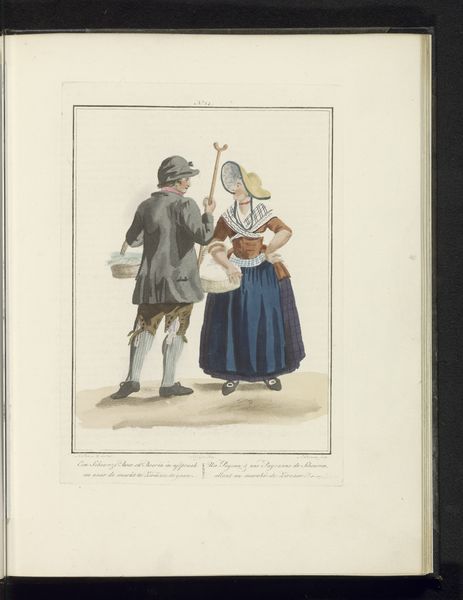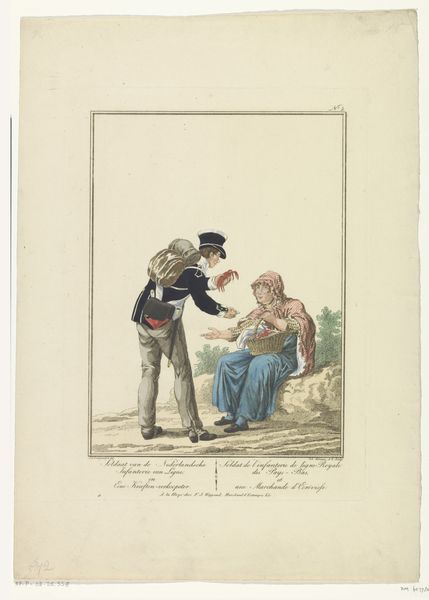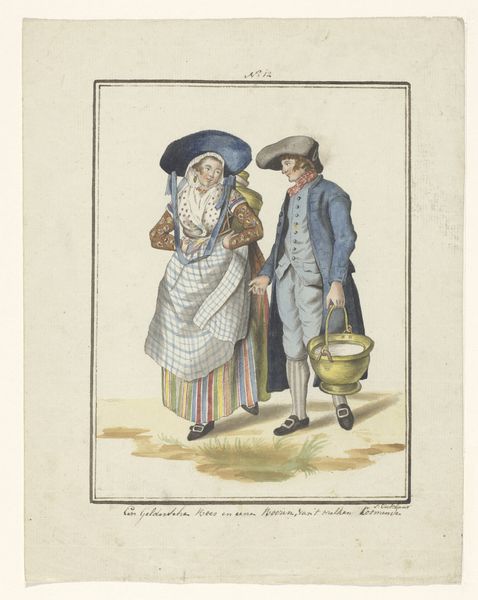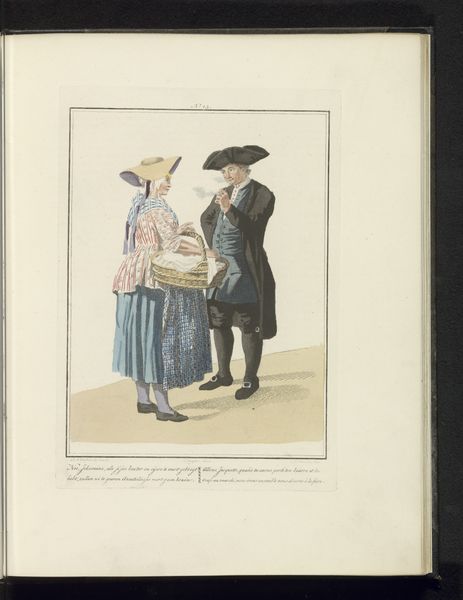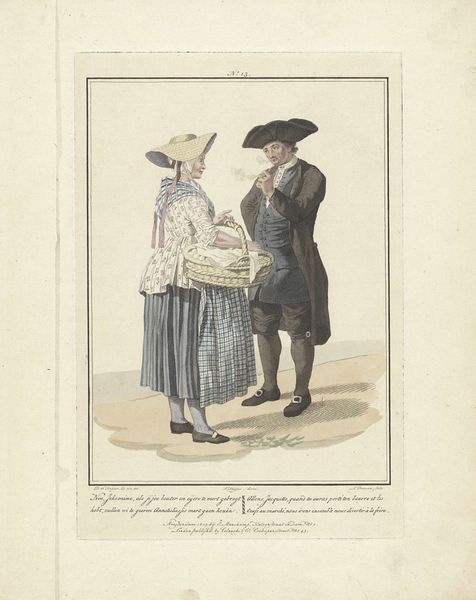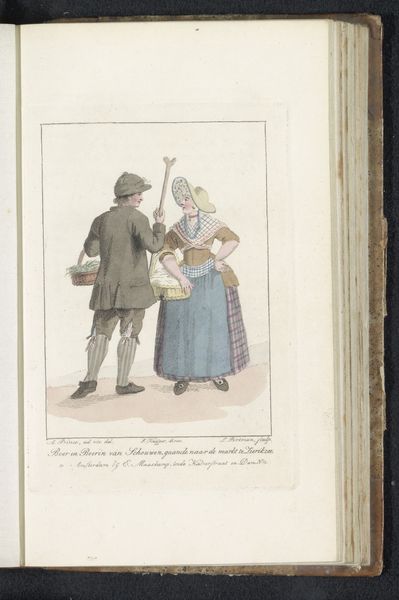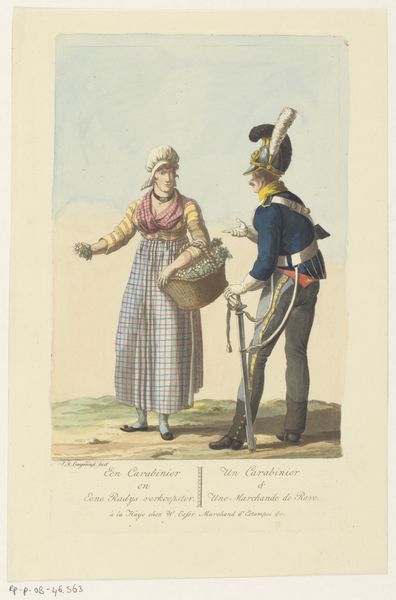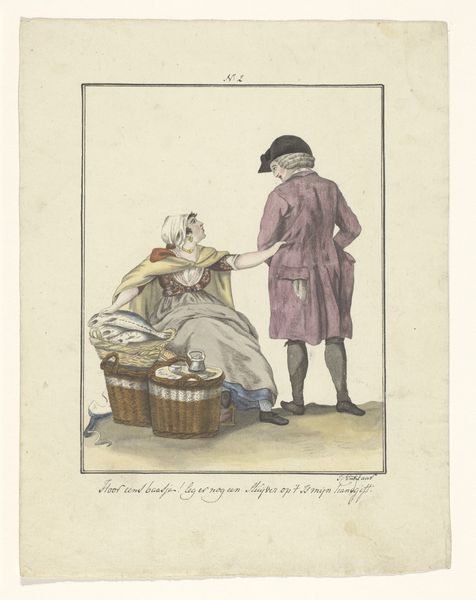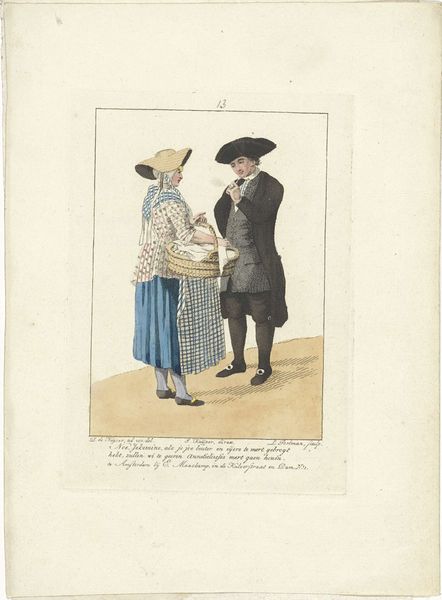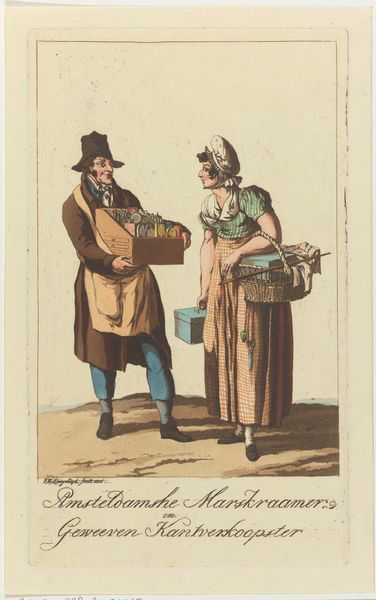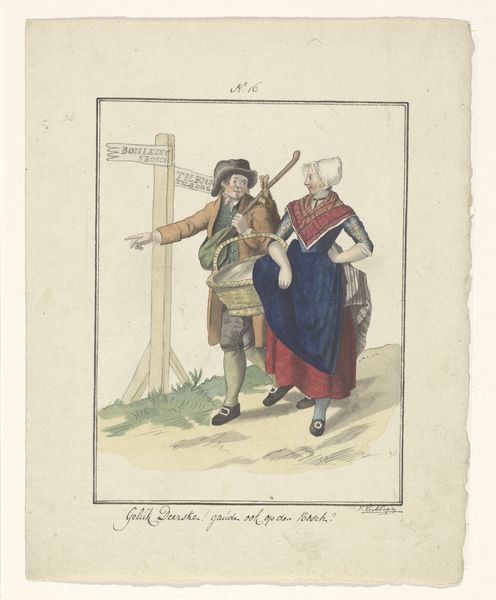
drawing, paper, watercolor
#
portrait
#
drawing
#
narrative-art
#
figuration
#
paper
#
watercolor
#
romanticism
#
genre-painting
Dimensions: height 280 mm, width 220 mm
Copyright: Rijks Museum: Open Domain
Curator: Ah, here we have J. Enklaar's "Man en vrouw van Schouwen," dating from after 1803. What’s your first take on this drawing? Editor: My eye is immediately drawn to the balance of colours. The muted yellows and blues create a pleasing harmony, although I find the overall composition slightly static. Curator: Interesting you mention the colours. It is watercolour and drawing on paper and that softness speaks volumes about the techniques available to an artist who was likely portraying everyday scenes and individuals and not a grand hero of state, nor of battle. What were the means for distributing materials at the time, what limitations did Enklaar likely work with, and to what end? This wasn't about individual expression. Editor: The precise rendering of the costumes is quite compelling. Note how Enklaar uses line and subtle shading to delineate the folds of fabric, particularly the woman’s apron and shawl. The precision with which they capture their clothes, it provides a rather formal visual language that invites an intimate study. Curator: Precisely! Enklaar depicts people of Schouwen in such particular detail, capturing what someone from this community would wear to market! This is documentary, but also demonstrates Enklaar's attention to depicting material culture and labour from this location, immortalizing these residents as a historical record for later reference. These individuals, like so many at the time, are largely nameless and yet, their clothes tell stories of the culture. Editor: Do you think the stiff posture undermines any sense of deep emotion or connection with its subjects? I'm missing that certain dynamism I usually get from Romantic art. Curator: While not aiming for expressive brushstrokes like Delacroix, Enklaar uses realism in service of cultural preservation and celebration of common workers. The narrative it presents is how they looked and perhaps some detail about their economic lives, not what they felt! Editor: It’s still an important perspective shift to see the working class so prominently. Curator: Yes, perhaps a gentle start, as we began our work with our own. Thanks to artists like J. Enklaar, we begin to see working folk enter art and gain representation!
Comments
No comments
Be the first to comment and join the conversation on the ultimate creative platform.
